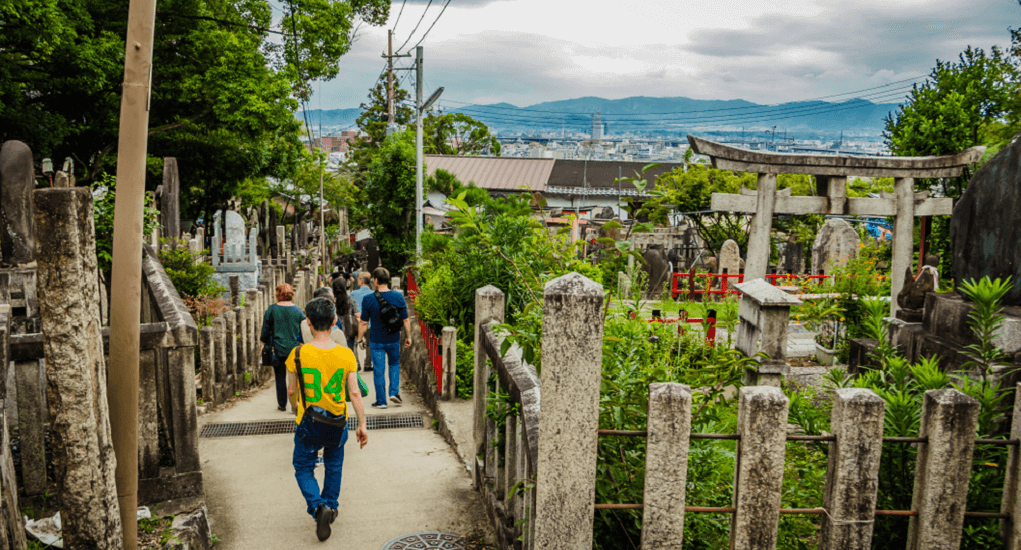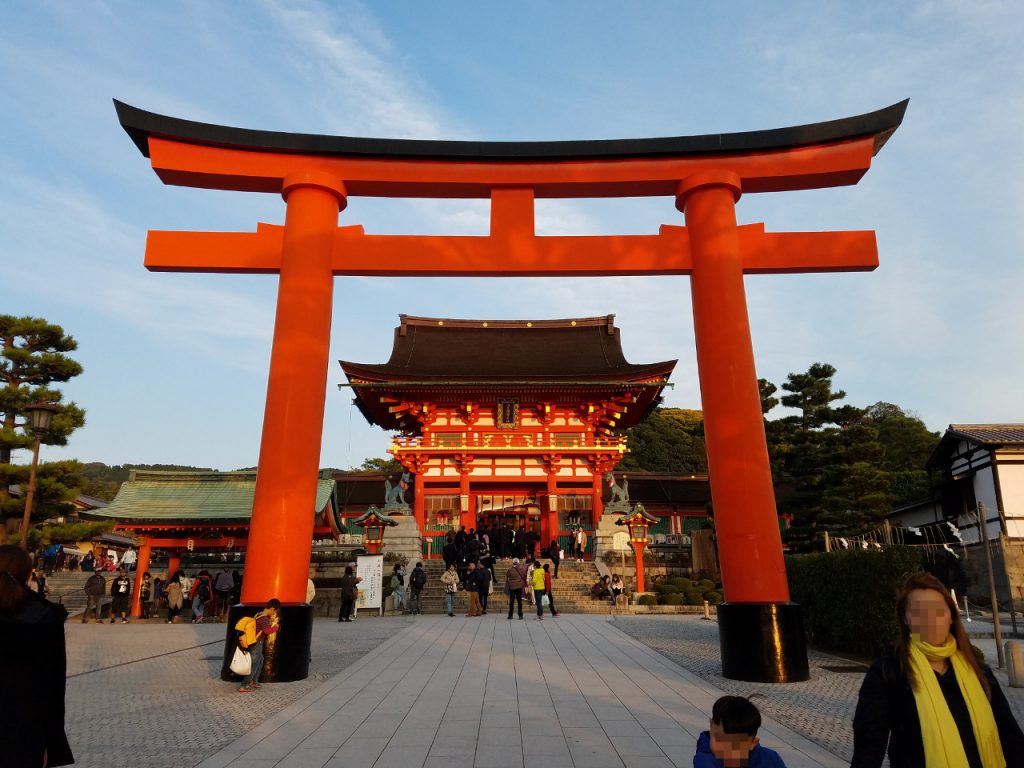Fushimi Inari Taisha (Taisha means Shrine in Japanese) is a popular tourist attraction in Kyoto, Japan. Located on the southern side of the city, the Shinto shrine is always packed with visitors. One of the main attractions is Torii gates that can lead you to Mount Inari wooded forest. If you follow the path, you can hike up and also enjoy the view. This is not only a shrine but also a historical construction with a sacred atmosphere and gorgeous surroundings.
Contents
Fushimi Inari Taisha Shrine in Japan – a Shrine to worship the God of Rice
The history of Fushimi Inari Taisha in Japan
Fushimi Inari Taisha, a Shinto shrine, was built in 711 by the Hata clan (of Korean origin) and relocated to its current location in 817. It is dedicated to the goddess (kami) Inari, related to rice, and therefore more widely to prosperity and wealth. Inari is the patron saint of traders: this is why the majority of torii are paid by businessmen, traders and companies. Their names are engraved in Japanese on the uprights of the red torii.
Fushimi Inari Taisha is well known because it is quite rare that the torii are together and aligned in one place. A torii is a gate, marks the entrance to a Shinto shrine, and symbolically separates the physical world from the spiritual world of the kami.
The shrine, which is very important in Japan, was placed under imperial patronage during the Heian period. At the beginning of the 20th century, it was designated as a national treasure, today a significant cultural property. It is the largest shrine dedicated to Inari in the whole country.
The Perfect Time to Visit the Shrine

The perfect time to come to the shrine without being surrounded by too many people is either late at night or very early morning. When you visit the shrine by the day, you want to get an early start –coming to the place at 7 AM or 8 AM. Once you are there, you can start the hike, enjoying the peace. The shrine is generally packed and crowded around 10 AM so be sure to come early before that.
Don’t forget that season plays an important part in enjoying the surroundings. In Japan, the sun always rises early. But during winters, it can be dark starting at 4 PM. One of the biggest disadvantages of visiting the shrine in the afternoon is that you will miss the sunset – over Kyoto. If you decide to visit the shrine at night, be sure to bring a good quality camera and a flashlight. The trail is peaceful although some people may find it spooky.
Lucky biscuits with original taste
There are Japanese restaurants and shops on the path leading to the shrine. You can find confectionery shops that sell tsujiura senbei, a type of fortune cookie that is believed to date back to the 19th century. Some people claim that the Chinese-American lucky biscuits are derived from the pastry.
Fox’s lunch
The fox messenger of Inari – known in Japanese as kitsune – has white fur. You can see white fox statues throughout the temple complex. In Japanese mythology, foxes love to eat aburaage – deep-fried tofu. As a result, restaurants leading up to the shrine sell inari sushi (aburaage rolls) and kitsune udon (buckwheat noodles cooked with aburaage topped with broth). Both are ideal for a delicious snack.
In fact, you’ll be forced to hike up the hill to see the entire torii gate tunnel, so take at least a couple of hours to visit. You should plan your late morning hikes to mid-afternoon, with a light lunch along the way.
You can easily combine a visit to Fushimi Inari Taisha with a visit to many other locations in Kyoto, such as a visit to the Nishiki Market in the morning, followed by a visit to another temple in the afternoon.
Getting there and around
Fushimi Inari Shrine is located just outside JR Inari Station, the second station from Kyoto Station along the JR Nara Line (5 minutes, 150 yen one way from Kyoto Station, not served by rapid trains). The shrine can also be reached in a short walk from Fushimi Inari Station along the Keihan Main Line.

